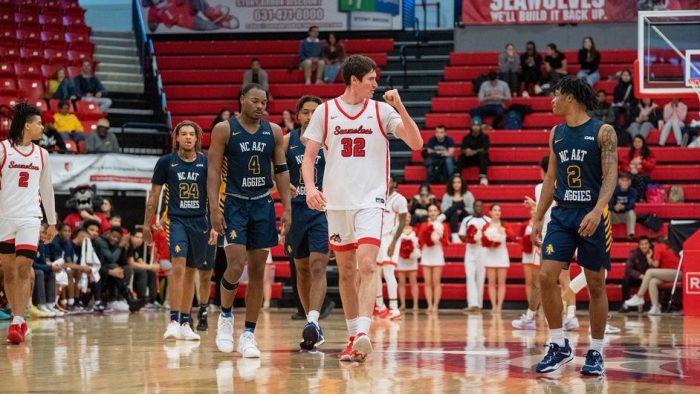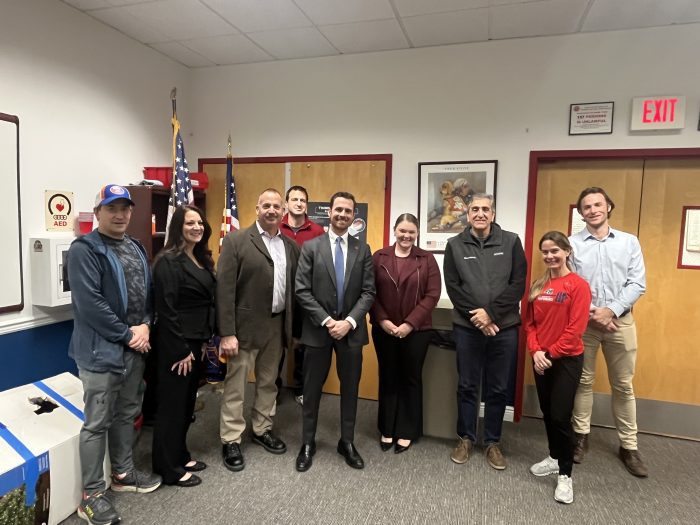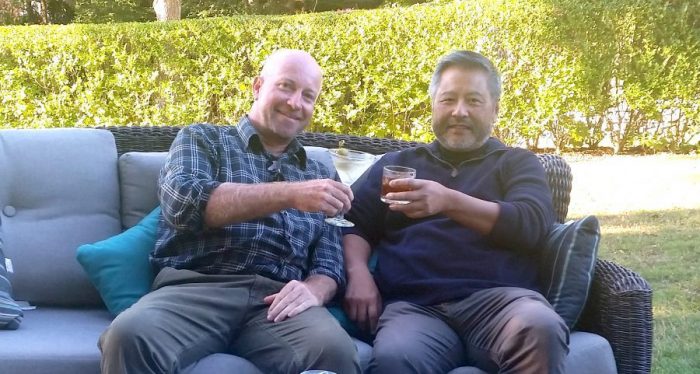By Daniel Dunaief
From over 66 million miles away, they take pieces of a puzzle and try to fill in the picture. In addition to looking at what’s there now, they also use clues to look back in time.
For the last eight years, researchers suspected that the presence of manganese oxide suggested that Mars had atmospheric oxygen billions of years ago. That’s because, on Earth and in water, oxygen converts manganese to manganese oxide.
Such a process whets the appetite in the search for prehistoric life on Mars that, like so many creatures on Earth, breathed oxygen.
The Martian story, however, involves puzzle pieces that came together in a different way.
In a paper published last month in Nature Geosciences, Kaushik Mitra, a postdoctoral researcher at Stony Brook University in the Department of Geosciences, suggested through geochemical modeling that oxygen on Mars, even if it was abundant billions of years ago, wouldn’t have created manganese oxide.
That’s because the water on Mars was acidic, with a pH of less than 5.5, which is below the neutral 7 level. Under those conditions, oxygen wouldn’t oxidize manganese.
Using experiments, Mitra showed that the manganese oxide could form in acidic water in other ways.
“Mars and Earth fluid conditions are very different,” Mitra said. “What I showed in my experiments is that oxygen in acidic fluids will not be able to oxidize manganese.”
Mitra conducted research that were part of his PhD work in Jeffrey Catalano’s lab at Washington University in St. Louis, MO.
Taking oxygen out of the picture, Mitra also detailed previous efforts that might explain the presence of manganese oxide, such as ultraviolet light. The manganese oxides formed in sub surface fractures, which this light couldn’t reach.
So, what happened?
“If the originally proposed (and plausible) oxidants were not the cause, there had to be some culprit,” Mitra explained in an email. “So there had to be some other oxidant.”
Bromine and chlorine
Enter chlorine and bromine, which are both halogens, or reactive non-metallic elements.
No one had looked into the potential of oxyhalogen compounds to produce manganese oxides in Mars-like conditions.
Bromate, which is a bromine atom attached to three oxygen atoms, can oxidize manganese in orders of magnitude faster than other oxidants, particularly in acidic conditions. Chlorate, which is also a chlorine atom attached to three oxygen atoms, alone can’t do it, but, with a small quantity of bromate, can create quantities of manganese oxide.
The oxygen attached to chlorine and bromine can come from water or any other ingredient, and doesn’t need oxygen gas to form.
“People didn’t really appreciate until [Mitra’s] paper came along that [manganese] is highly reactive towards these oxyhalogen compounds that he has been working with, so it gives us a whole new way to think about how [manganese-oxides] might form on Mars,” Joel Hurowitz, Associate Professor in Geosciences at Stony Brook University, explained in an email. Mitra has been working as a postdoctoral researcher in Hurowitz’s lab since November of 2021.
While oxygen may not have caused the change in manganese, the search for Martian life doesn’t end here. Some organisms, including on Earth, don’t need oxygen to survive.
Extremophiles, which can survive in the Great Salt Lake, the Dead Sea, and around hydrothermal vents at the bottom of the ocean, do not need oxygen.
Mitra’s research “teaches us to be cautious in our astrobiology strategy and consider all the alternative possibilities,” Hurowitz explained. “It is entirely possible that Martian life did not depend on [oxygen] or produce [oxygen] as a by-product of its metabolism.”
For the first two billion years of life on Earth, high concentrations of oxygen would have been toxic to microbial life, Hurowitz added.
To be sure, just because halogens like chlorine and bromine can explain the presence of manganese oxide instead of oxygen doesn’t rule out the possibility that Mars had oxygen.
Paradigm shift
Mitra has continued his exploration of the importance of oxyhalogen species in Hurowitz’s lab to improve the understanding of how they interact with various mineral phases that are considered key records of paleoenvironmental conditions on Mars.
On a more immediate scale, Mitra’s approach to his work has created something of a paradigm shift in Hurowtiz’s lab. When the postdoctoral researcher arrived at Stony Brook, he immediately started between 30 and 40 separate experiments within the span of a month.
This effort contrasts with the attempt to create one perfect, completely controlled experiment that can take months of time that might be lost if something went wrong.
“It has actually changed the way that I think about experimental project methods,” Hurowitz wrote. “It’s a great new way to explore geochemistry and my students are adopting many of the approaches he’s brought into the lab.”
Hurowitz described Mitra as a “great addition” to the group.
A passion for science
A native of Bhagalpur, India, which is in the state of Bihar, Mitra had a strong interest in chemistry during his youth.
He attended the Indian Institute of Technology Kharagpur, where he earned an integrated Bachelors and Masters of Science Degree in Applied Geology.
Mitra, who currently lives in Centereach, is fluent in English, Hindi and Bengali and is learning Nepali, the native language of his spouse Priyanka Sharma who is from Nepal.
Sharma, who is an Indian Nepali, is applying for graduate school in English Literature and Comparative Literature.
An avid reader whose favorite genre is philosophy, Mitra is currently reading Fyodor Dostoesky and Friedrich Nietzsche.
A long distance runner, Mitra ran a 10K in Queens last year and would like to run a half marathon in the spring.
He will likely finish his postdoctoral research by next year, at the latest, at which point he will apply for a faculty job.
Passionate about teaching, Mitra has been a committed mentor to other students at Stony Brook, Hurowitz said.
Mitra created a YouTube channel for geology and geochemistry undergraduates and graduates in which he shares lessons about geoscience and chemistry in English and Hindi, which is available at https://www.youtube.com/@kmicalmindset6322.
“I am trying to inspire more people to come into planetary geoscience,” he said, especially undergraduates.

